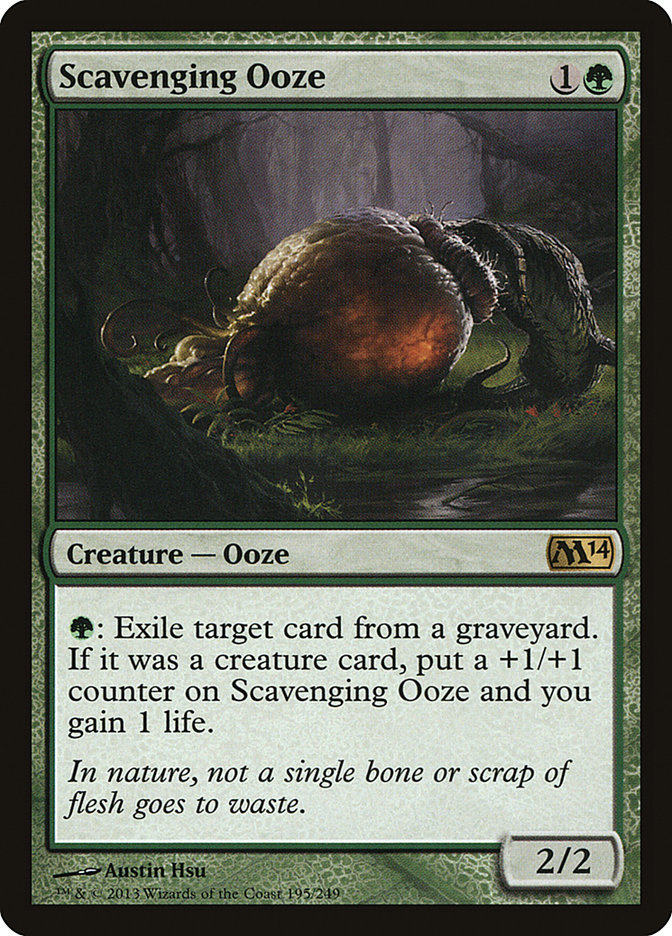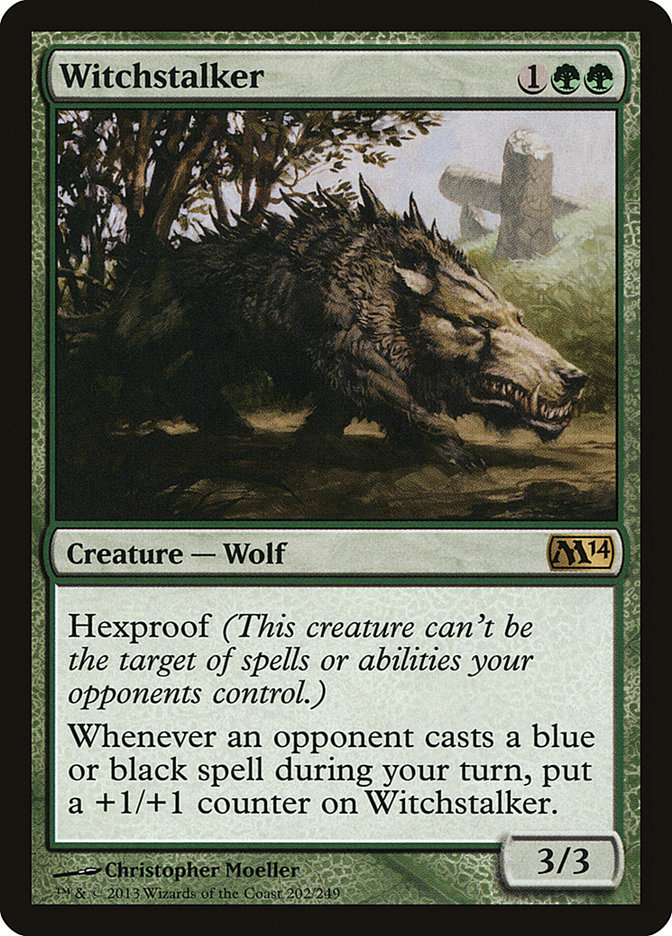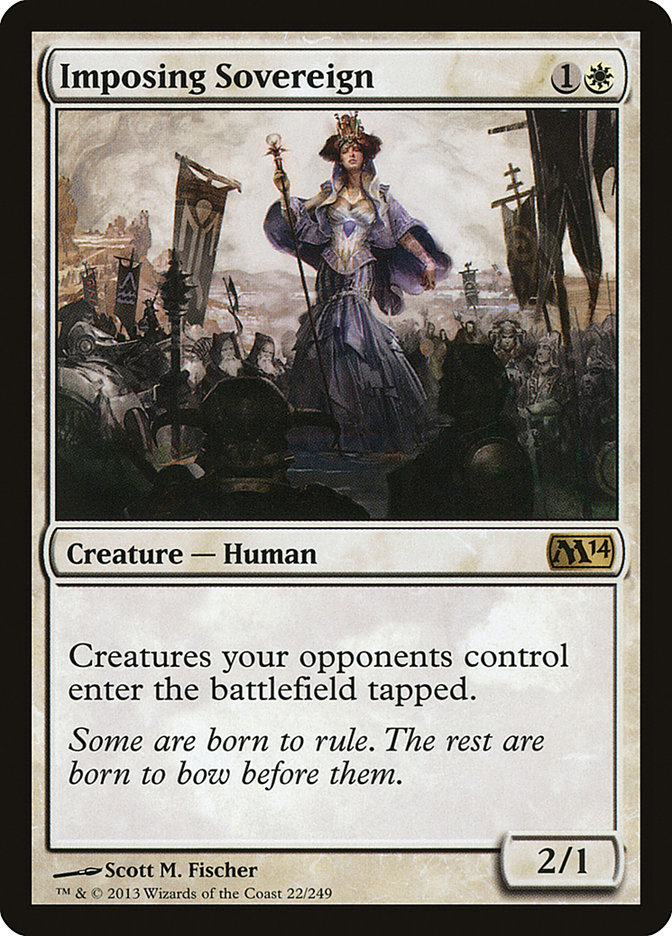The first tournament of a new Standard format is always exciting due to its unpredictability. You carefully checked the new playable cards and adapted your deck accordingly, but what if you missed something? What if everyone is ready for your updates and you should’ve gone a level ahead? What if you overestimated the relevance of certain cards or strategies and thus weakened yourself against the actual field? Too many questions, and they hardly have answers. But we can start by looking at level one and at an idea that I consider promising.
Scavenging Ooze is the most hyped card in M14. Everyone is tired of Junk Reanimator; Scavenging Ooze could solve this problem, but the card, albeit being called "the new Tarmogoyf of Standard," is mana hungry, is bad in multiples, and thus doesn’t fit very well in aggressive decks. There have been fewer decklists posted with Scavenging Ooze than I expected, and the best of them, [author name="Reid Duke"]Reid Duke’s[/author] Jund, uses Scavenging Ooze as an upgrade to Ground Seal. Yes, this upgrade is huge, but it’s due to other matchups. Scavenging Ooze isn’t dramatically better than Ground Seal against Junk Reanimator.
The other midrange decks that are able to exploit Scavenging Ooze are Angel of Serenity’s natural victims without it. Abrupt Decay is still available, and the power of Junk Reanimator is in its ability to work in different modes. Somberwald Sage is still legal, and Obzedat, Ghost Council is still deadly. These are surely hard times for Junk Reanimator, but the hype will come and go, so I expect Unburial Rites to be a relevant card in August and September (which is relevant for me since I’m going to attend Grand Prix Warsaw).
The second most hyped card is probably Witchstalker. Bant Hexproof is the deck that seems to get the most powerful updates (which I covered last week. It’s still not clear if the deck is really much better and more stable (I’m not sure which build is better and if Gladecover Scout is playable), but I expect a good portion of the StarCityGames.com Standard Open in Richmond to be filled with Auras. Such an expectation would lead to the rise of control decks, which have a good matchup against Hexproof (despite Witchstalker). Level two is probably to play the deck that beats control. That means super-fast aggro, but it’s weak to Jund…or is it?
This card that will help aggressive decks fight midrange was a little bit overlooked right after it was announced, but it’s getting more attention now. I like Imposing Sovereign very much and expect it to become one of Standard’s driving forces. Imposing Sovereign definitely fits into Naya Blitz, but it also has a potential of making non-red aggro viable.
However, there is a serious concern. Looking at [author name="Brad Nelson"]Brad Nelson’s[/author] take on Naya Blitz), I’ve noticed that there is a common thing among many creatures: Imposing Sovereign, Boros Elite, Mayor of Avabruck, Lightning Mauler… These creatures have the same toughness as Somberwald Sage and Avacyn’s Pilgrim and all die to Electrickery or Bonfire of the Damned with X=1. Moreover, the expected rise of Hexproof (a short one due to the hype of Witchstalker and Gladecover Scout) makes Golgari Charm better, while Hexproof’s biggest rival and Blitz’s traditional victim (Esper/Grixis Control) gets the rarely mentioned but very effective Shrivel.
The format also contains some good ways to dodge sweepers, with Lingering Souls and Xathrid Necromancer among them, but Ratchet Bomb is also available for a large variety of decks, which makes token-based decks (including all versions of The Aristocrats) much less appealing. Sweepers aren’t a panacea in the world of Voice of Resurgence, but I think that people arguing that Xathrid Necromancer is insane underestimate Ratchet Bomb a bit. It would be fine if control players also underestimated it, but what if they don’t? That’s why I think a heavier aggro deck with a higher mana curve would be better than a super-aggressive one.
Many swords were broken in arguing about a third color for a R/G Thundermaw Hellkite deck and the power of Kalonian Hydra in such a deck. Both variants have their advantages and disadvantages, but there was a question that caused me to raise my eyebrows: "We’re talking about three-color decks; are you sure you can reliably beat a Burning Earth?"
I answered, "Sure. I want Elvish Mystic and Farseek / Gyre Sage here, so it wouldn’t be troublesome to create a big threat. Sideboarded Huntmaster of the Fells may also help."
But isn’t it better to be less greedy and avoid Burning Earth—or better yet use it? The combination of Domri Rade and Burning Earth in post-board R/G Aggro would be enough to defeat any control or midrange deck.
There is, however, an even more interesting question: is Burning Earth a good maindeck card? It doesn’t fit well into existing R/G or G/R Aggro, but something new could work. The first weeks of the new Standard format will likely show the popularity of Bant Hexproof, so blue decks will be on the rise right after that—or even immediately since control pilots are probably aware of Witchstalker and their good matchup against Hexproof. The other reason to play Burning Earth maindeck is Jund’s clear improvement via Scavenging Ooze. Jund will likely become much less Farseek centric and more stable, which could attract more players to it (even me).
I expect players to respect the powerful enchantment but to still use complicated three-color mana bases, adding two or three excessive basics rather than cutting the third color. Such greediness is understandable (even more with announced lack of comparably good mana bases in Ravnica-Theros Standard), but greediness should be punished. Finding a home isn’t easy for Burning Earth, but what about Big Red? Such a deck wasn’t viable before because it lacked both card advantage and card quality. Burning Earth helps card quality, while Chandra, Pyromaster provides card advantage. This deck is also a much better home for Chandra’s Phoenix than the current seven-spell red decks; the recurring flier is just what a grindy midrange deck needs.
Creatures (12)
Planeswalkers (4)
Lands (24)
Spells (20)
- 2 Ratchet Bomb
- 2 Blasphemous Act
- 4 Bonfire of the Damned
- 4 Pillar of Flame
- 4 Searing Spear
- 4 Burning Earth
Sideboard

Big Red’s card quality is obviously lower than Jund’s, but most of its cards are much more flexible (Pillar of Flame punching the opponent’s face and recurring Chandra’s Phoenix isn’t a bad play), Boros Reckoner is still good against creatures, and Thundermaw Hellkite is still deadly.
The deck has some problems caused by color pie restrictions. Two of the most important of are having trouble with big creatures and the inability to deal with enchantments. However, the first problem can be mitigated by careful play, including Burning Earth, cheap removal for mana dorks, and Threaten effects. The second problem is worse—especially Unflinching Courage—but let’s hope that other players will take care of Hexproof.
The sideboard contains mostly more effective but narrow analogues of maindeck cards. Most notably there’s Wild Ricochet, which is strange, but its ability to copy cards like Bonfire of the Damned, Rakdos’s Return, and Sphinx’s Revelation might actually work. To prevent confusion, you can’t redirect an opponent’s Rakdos’s Return, so Wild Ricochet isn’t better than Reverberate here, but doubling opponent’s an Bonfire of the Damned is devastating, as is doubling Putrefy.
There are some things I’m uncertain about, like the number of lands, but I’m generally happy with the list. If you want to play something similar, try to figure out if one or two more lands would be excessive in terms of decreasing topdeck quality. I’d trade someone’s soul for Everflowing Chalice, but three-mana acceleration isn’t what I want to see here (even if the card draw from Rakdos Cluestone would be relevant). You could also exploit the Chandra-Phoenix engine and splash another color. The addition of eight nonbasic lands (and maybe some basics) would be acceptable; adding black and adding green each solve different problems.
Creatures (11)
Planeswalkers (4)
Lands (24)
Spells (21)

Black gives us Dreadbore to deal with troublesome creatures, Cremate to match Junk Reanimator, and Devour Flesh to make the Hexproof matchup not so terrible. There’s also the almighty Olivia Voldaren, but we don’t have enough black mana sources to properly support it, so I’d probably side in Olivia instead of Burning Earth rather than playing both maindeck.
Creatures (14)
Planeswalkers (4)
Lands (24)
Spells (18)
Sideboard

Green offers Huntmaster of the Fells and Garruk Relentless along with Naturalize and Ground Seal (and potentially but unlikely Farseek). Both splashes drive us closer to Jund Midrange, but we have a great advantage in Burning Earth, which could make a variation of this deck a viable contender in Standard. There are problems that need to be solved, but the ability to hose a good part of metagame isn’t one to be overlooked.
The StarCityGames.com Open Series in Richmond next weekend is going to be awesome, and the StarCityGames.com Invitational in New Jersey right after that makes Richmond even more interesting. I’m not participating due to obvious reasons, but these tournaments will help me prepare for Grand Prix Warsaw, so I’ll stay tuned to coverage while being a little bit jealous of those of you who get to participate in them. Good luck!




